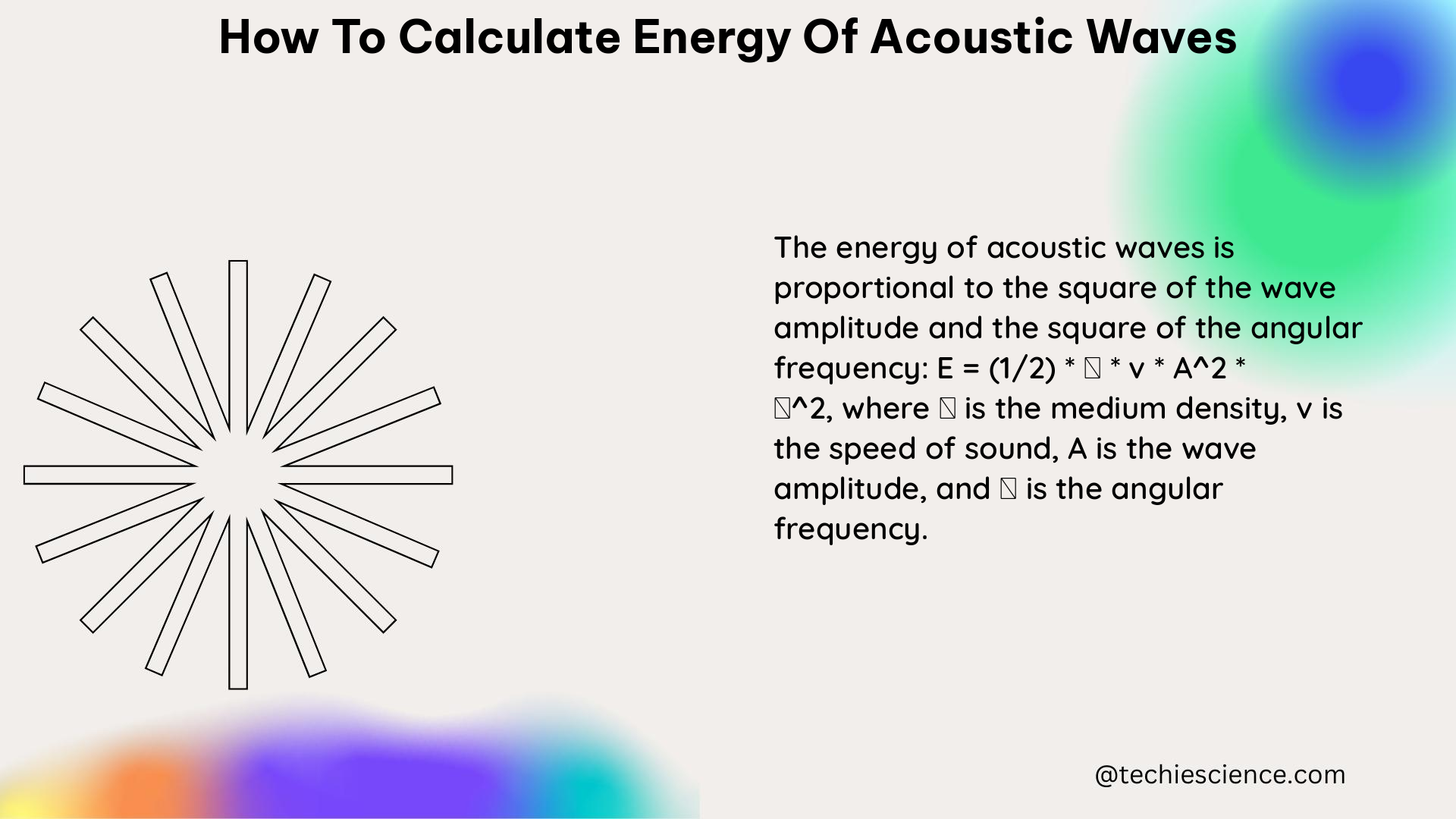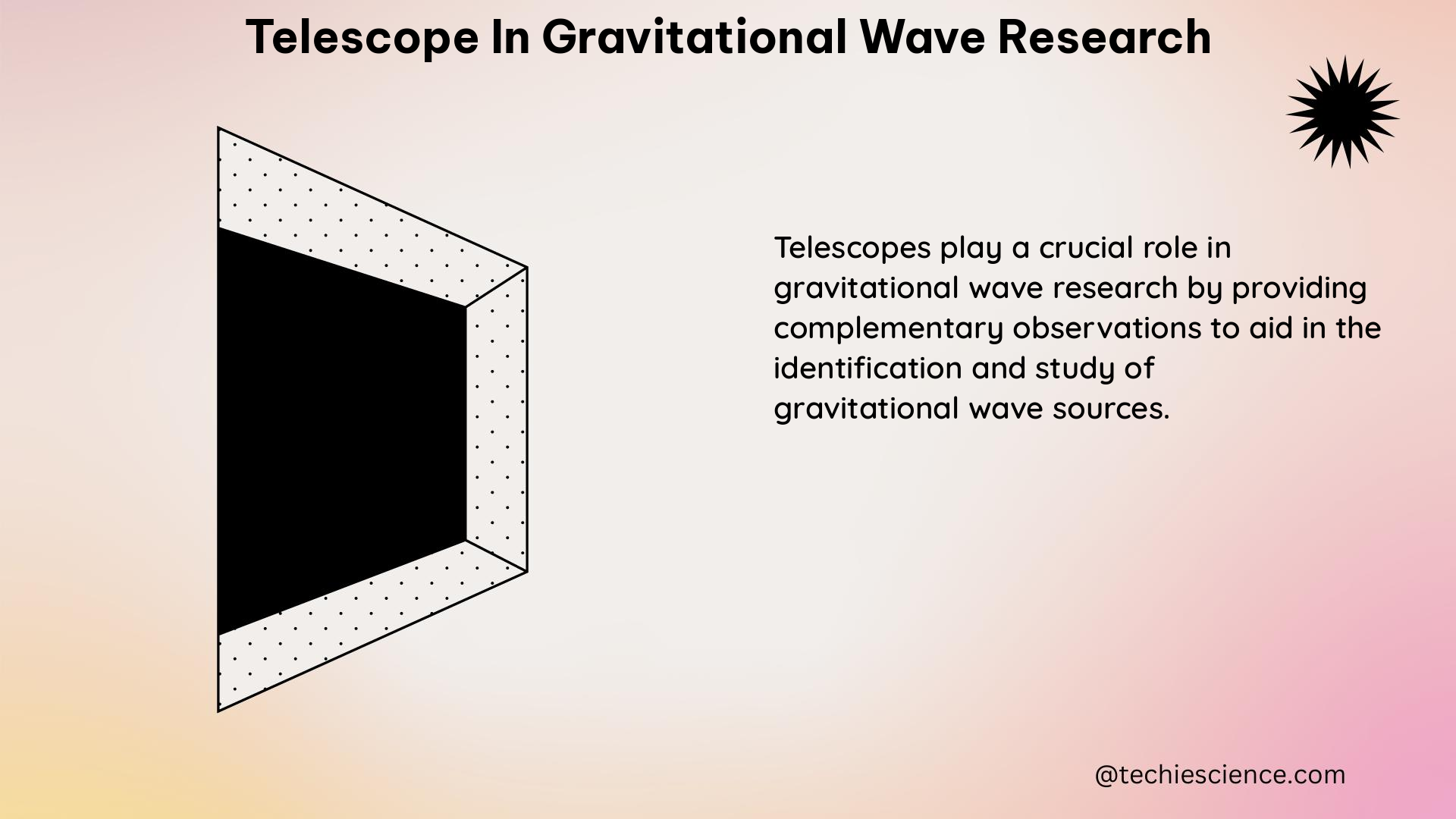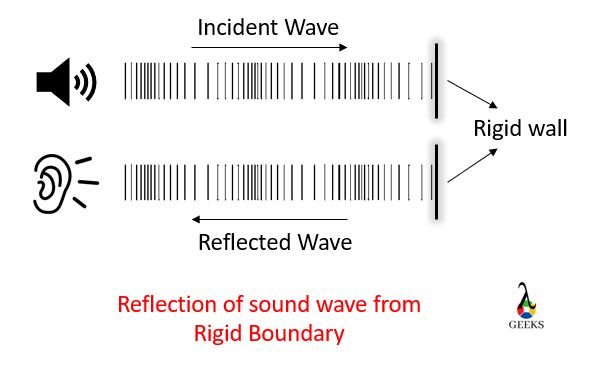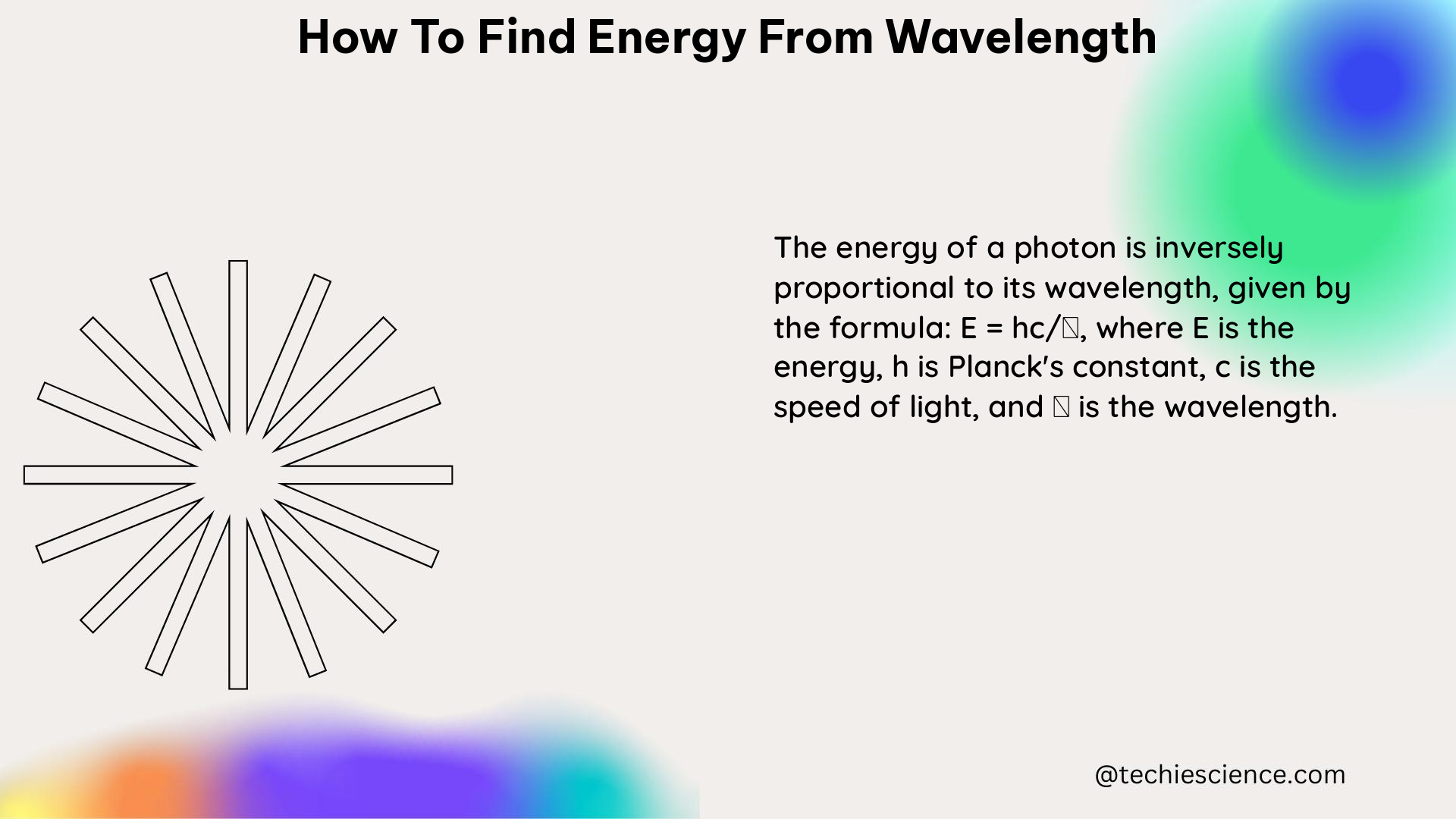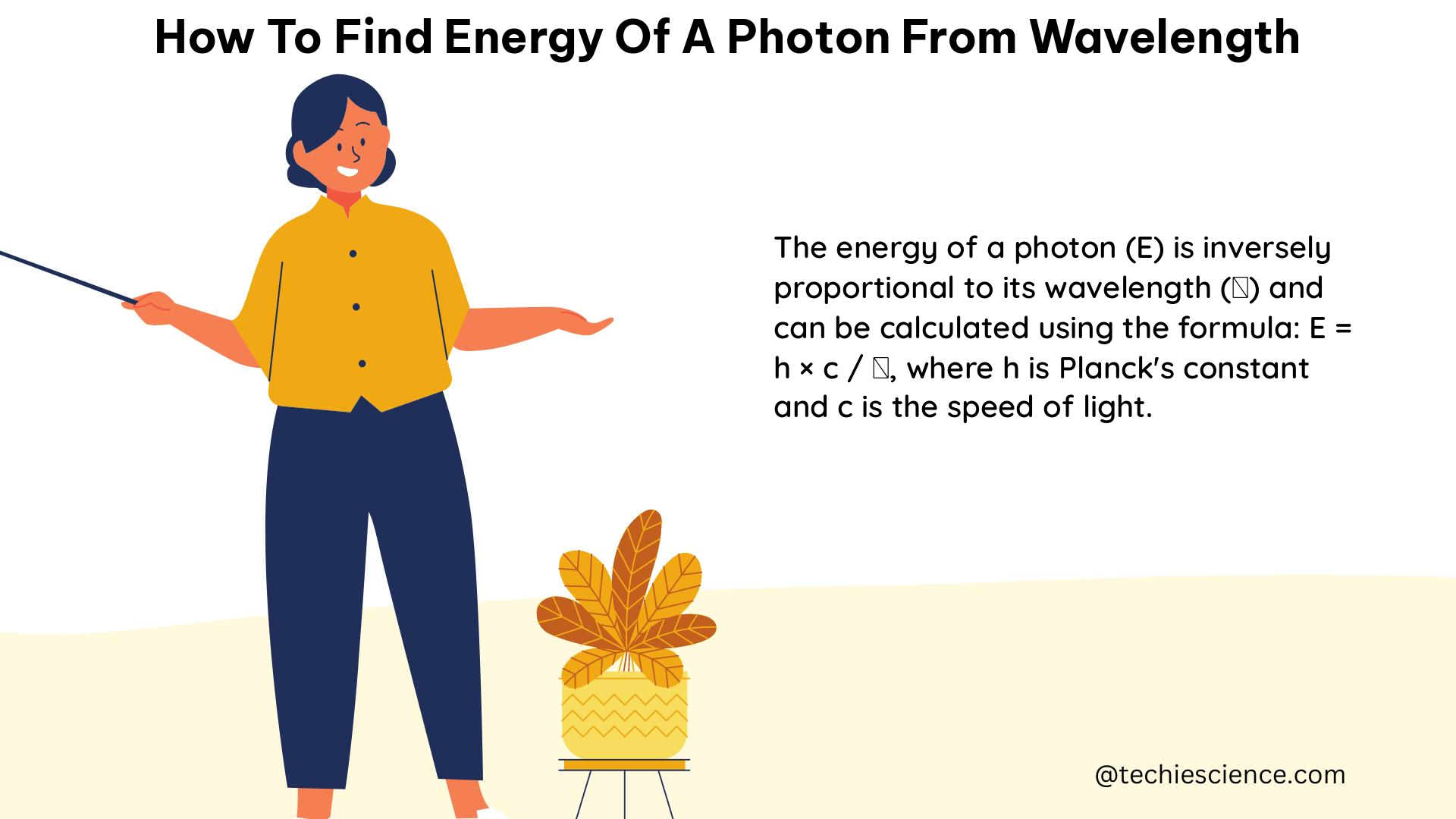Wave motion is a fascinating phenomenon that can be observed in various aspects of our daily lives. From the gentle ripples on the surface of a pond to the powerful waves crashing onto a beach, waves are all around us. They can be found in nature, such as in the form of ocean waves, sound waves, and seismic waves. Additionally, waves are also present in man-made systems, like the vibrations in musical instruments and the transmission of information through radio waves. Understanding the concept of wave motion is essential in comprehending many scientific principles and phenomena. In this article, we will explore some examples of wave motion and delve into the fascinating world of waves. So, let’s dive in and ride the wave of knowledge!
Key Takeaways
- Wave motion is the transfer of energy through the oscillation of particles or fields.
- Examples of wave motion include ocean waves, sound waves, light waves, and seismic waves.
- Waves can be characterized by their amplitude, wavelength, frequency, and speed.
- Wave motion follows the principles of superposition, interference, and reflection.
- Understanding wave motion is crucial in various fields, such as physics, engineering, and telecommunications.
Transverse Wave Motion Example
One fascinating example of transverse wave motion is plucking a guitar string. When you pluck a guitar string, it vibrates and produces sound waves that travel through the air to reach our ears. Let’s take a closer look at how this process works.
Plucking a Guitar String
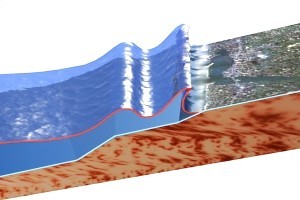
When you pluck a guitar string, you create a disturbance in the string’s equilibrium position. This disturbance causes the string to vibrate back and forth, creating a transverse wave. As the string vibrates, it moves up and down perpendicular to the direction of the wave propagation.
The vibration of the string creates compressions and rarefactions in the surrounding air, which are regions of high and low pressure respectively. These pressure variations travel through the air as sound waves, eventually reaching our ears and allowing us to hear the music.
The pitch of the sound produced by the guitar string depends on various factors, including the tension in the string, the length of the vibrating portion, and the thickness and material of the string. By altering these factors, musicians can produce different notes and create beautiful melodies.
Plucking a guitar string is just one example of transverse wave motion. Other examples include waves on a string, water ripples, and electromagnetic waves such as light. Understanding transverse wave motion is crucial in various fields, including physics, engineering, and music.
In summary, when you pluck a guitar string, you set it into transverse wave motion. The resulting vibrations create sound waves that travel through the air, allowing us to enjoy the melodious tunes of a guitar. This example highlights the fascinating nature of transverse wave motion and its applications in our everyday lives.
Wave Motion Summary
Wave motion is a fascinating phenomenon that can be observed in various aspects of our daily lives. It is a concept that plays a crucial role in the field of physics and has numerous practical applications. In this section, we will explore the definition of wave motion and discuss its key characteristics.
Definition of Wave Motion
Wave motion can be defined as the transfer of energy through the propagation of disturbances in a medium. It involves the transfer of energy without the physical displacement of the medium itself. Waves can travel through different mediums, such as air, water, or even solids.
When a disturbance is created in a medium, it causes particles in that medium to oscillate or vibrate. These oscillations propagate through the medium, carrying energy from one point to another. It’s important to note that while the energy is transferred, the particles themselves do not travel with the wave.
Characteristics of Wave Motion
Wave motion exhibits several key characteristics that help us understand its behavior and properties. Let’s take a closer look at some of these characteristics:
-
Amplitude: The amplitude of a wave refers to the maximum displacement of particles from their equilibrium position. It represents the intensity or strength of the wave. A higher amplitude indicates a more powerful wave, while a lower amplitude signifies a weaker wave.
-
Frequency: Frequency is the number of complete oscillations or cycles a wave completes in a given time period. It is measured in hertz (Hz) and is inversely proportional to the wavelength. Waves with higher frequencies have shorter wavelengths, while waves with lower frequencies have longer wavelengths.
-
Wavelength: Wavelength is the distance between two consecutive points in a wave that are in phase with each other. It is usually represented by the Greek letter lambda (λ) and is measured in meters (m). Wavelength determines the spatial extent of a wave and is inversely proportional to its frequency.
-
Speed: The speed of a wave refers to the rate at which the wave propagates through a medium. It is calculated by dividing the wavelength by the period of the wave. The speed of a wave depends on the properties of the medium through which it travels.
-
Propagation: Waves can propagate in different ways, depending on the nature of the disturbance and the medium. There are three main types of wave propagation: mechanical, electromagnetic, and surface waves. Mechanical waves require a medium to propagate, while electromagnetic waves can travel through a vacuum. Surface waves, as the name suggests, propagate along the surface of a medium.
Understanding the characteristics of wave motion is essential for comprehending various phenomena in physics and everyday life. Whether it’s the motion of ocean waves, the transmission of sound, or the behavior of light, waves are all around us. By studying wave motion, scientists and engineers can develop technologies and solutions that improve our lives and advance our understanding of the world.
Examples of Wave Motion in Daily Life
Wave motion is a fundamental concept in physics that can be observed in various aspects of our daily lives. From the gentle ripples in a water pond to the powerful seismic waves during an earthquake, wave motion is all around us. Let’s explore some fascinating examples of wave motion in different contexts.
Light Wave

Light waves are a type of electromagnetic wave that we encounter every day. Whether it’s the warm glow of the sun or the vibrant colors of a rainbow, light waves play a crucial role in our visual perception. They travel in a straight line and can be reflected, refracted, or diffracted, creating mesmerizing patterns and effects. Light waves also enable us to see objects by reflecting off their surfaces and entering our eyes.
Ripples in a Water Pond

Have you ever dropped a pebble into a calm water pond and watched as ripples spread outward? These ripples are an excellent example of wave motion. When the pebble hits the water surface, it creates a disturbance that propagates as a wave. The wave energy moves through the water, causing the surface to rise and fall in a repeating pattern. This phenomenon is not only visually captivating but also demonstrates the principles of wave propagation.
Earthquake (Seismic S Wave)
During an earthquake, various types of seismic waves are generated, including S waves. S waves, also known as shear waves, are a type of mechanical wave that travel through the Earth’s interior. Unlike primary waves (P waves) that compress and expand the ground, S waves move in a side-to-side motion perpendicular to their direction of travel. These waves can cause significant damage to structures, making them a crucial area of study in seismology.
Tsunami Waves
Tsunamis are massive ocean waves that can be triggered by underwater earthquakes, volcanic eruptions, or landslides. These waves can travel across entire ocean basins, carrying an enormous amount of energy. When a tsunami approaches the shore, it undergoes a transformation, causing it to rise dramatically in height. The devastating power of tsunamis serves as a reminder of the immense force that wave motion can possess.
Application of Spring
Springs are commonly used in various applications, such as shock absorbers, mattresses, and even toys. When a spring is compressed or stretched, it exhibits wave-like behavior. This motion is known as harmonic motion or simple harmonic motion. The spring oscillates back and forth, creating a wave pattern. This concept is utilized in many mechanical devices to absorb and dissipate energy, providing a smoother experience.
X-Rays
X-rays are a type of electromagnetic wave that has a higher frequency and shorter wavelength than visible light. They are commonly used in medical imaging to visualize the internal structures of the human body. X-rays can pass through soft tissues but are absorbed by denser materials like bones. By analyzing the patterns of X-rays that pass through the body, doctors can diagnose various conditions and injuries.
Audience (Mexican Waves)
Have you ever been to a sports stadium and witnessed the crowd performing a Mexican wave? This phenomenon involves a wave-like motion rippling through the audience as people stand up and sit down in a synchronized manner. The wave starts from one section of the crowd and spreads to the adjacent sections, creating a visually captivating spectacle. Although not a physical wave, it showcases the collective behavior and coordination of a large group of people.
Electromagnetic Waves
Electromagnetic waves encompass a wide range of phenomena, including radio waves, microwaves, infrared, visible light, ultraviolet, X-rays, and gamma rays. These waves are created by the oscillation of electric and magnetic fields and can travel through a vacuum. Electromagnetic waves have numerous applications in communication, technology, and scientific research. From radio and television broadcasting to wireless communication and medical imaging, electromagnetic waves have revolutionized our modern world.
In conclusion, wave motion is a fascinating concept that manifests in various forms in our daily lives. Whether it’s the gentle ripples in a water pond, the powerful seismic waves during an earthquake, or the captivating patterns of light, wave motion surrounds us. Understanding these examples of wave motion not only enhances our appreciation for the natural world but also deepens our understanding of the fundamental principles of physics.
Oscillating String or Rope
One of the most common examples of wave motion can be observed in the oscillation of a string or rope. This phenomenon, known as wave motion, occurs when a disturbance is introduced to the string or rope, causing it to vibrate and propagate energy along its length.
J. Shock Absorber
One practical application of wave motion in everyday life is found in shock absorbers, such as those used in vehicles. Shock absorbers are designed to dampen the vibrations caused by bumps and uneven surfaces on the road. They work by converting the kinetic energy of the oscillating suspension system into heat energy, effectively reducing the amplitude of the vibrations and providing a smoother ride.
To understand how shock absorbers utilize wave motion, let’s take a closer look at their structure. A typical shock absorber consists of a piston, a cylinder, and a hydraulic fluid. When a vehicle encounters a bump, the suspension system compresses, causing the piston to move up and down within the cylinder. This motion creates waves in the hydraulic fluid, which then dissipate the energy as heat.
The oscillating motion of the piston and the resulting waves in the hydraulic fluid help absorb the impact of the bump, preventing the vehicle from bouncing excessively. By controlling the amplitude and frequency of the waves, shock absorbers ensure a comfortable and stable ride for passengers.
In addition to vehicles, wave motion is also utilized in various other applications, such as musical instruments, sports equipment, and even medical devices. For example, musical instruments like guitars and violins produce sound through the vibration of strings, which creates waves in the surrounding air. Similarly, sports equipment like tennis rackets and golf clubs utilize wave motion to transfer energy efficiently and enhance performance.
Overall, the oscillation of a string or rope is a prime example of wave motion. Its practical applications, like shock absorbers, demonstrate how wave motion can be harnessed to improve our everyday lives. Whether it’s in vehicles, musical instruments, or sports equipment, wave motion plays a crucial role in enhancing our experiences and ensuring smooth and efficient operations.
What is Transverse Wave Motion?
Transverse wave motion is a fascinating phenomenon that occurs when particles in a medium move perpendicular to the direction of the wave. In simpler terms, it is a type of wave where the disturbance travels across the medium in a sideways or up-and-down motion, rather than in the same direction as the wave itself.
Definition of Transverse Wave Motion
In transverse wave motion, the particles of the medium oscillate or vibrate in a direction perpendicular to the direction of the wave propagation. This means that as the wave moves forward, the particles move up and down or side to side. This can be visualized by imagining a rope being shaken up and down, creating a wave that moves horizontally.
Characteristics of Transverse Wave Motion
Transverse waves possess several distinct characteristics that set them apart from other types of waves. Let’s take a closer look at some of these characteristics:
-
Perpendicular Oscillation: In transverse wave motion, the particles of the medium oscillate in a direction perpendicular to the direction of the wave. This perpendicular oscillation gives transverse waves their unique shape and behavior.
-
Crests and Troughs: Transverse waves have high points called crests and low points called troughs. The crests represent the maximum displacement of the particles in an upward direction, while the troughs represent the maximum displacement in a downward direction.
-
Wavelength: The wavelength of a transverse wave is the distance between two consecutive crests or troughs. It is a measure of the spatial extent of the wave and is usually denoted by the symbol λ (lambda).
-
Amplitude: The amplitude of a transverse wave is the maximum displacement of the particles from their equilibrium position. It represents the intensity or strength of the wave and is typically denoted by the symbol A.
-
Propagation: Transverse waves propagate by transferring energy from one particle to the next. As each particle oscillates, it imparts its energy to the neighboring particles, causing them to oscillate as well. This transfer of energy allows the wave to travel through the medium.
-
Examples: Some common examples of transverse wave motion include light waves, electromagnetic waves, and water waves. In the case of light waves, the oscillation occurs in the electric and magnetic fields perpendicular to the direction of wave propagation. In water waves, the oscillation occurs in the vertical direction as the wave moves horizontally across the surface of the water.
Transverse wave motion is a fundamental concept in physics and has numerous applications in various fields. Understanding its characteristics and behavior helps us comprehend the nature of waves and their impact on our everyday lives. Whether it’s the beautiful ripples on the surface of a pond or the mesmerizing dance of light, transverse waves are all around us, shaping the world we perceive.
How to Make a Wave Motion Machine
A wave motion machine is a fascinating device that demonstrates the principles of wave motion. It can be a great educational tool for understanding the behavior of waves in various mediums. In this section, we will explore the steps involved in creating a simple wave motion machine.
Materials Needed
Before we begin, let’s gather the materials required to build our wave motion machine. Here’s a list of what you’ll need:
- A sturdy base – This will serve as the foundation for your machine.
- A long, flexible rod or string – This will act as the medium through which the waves will travel.
- A weight or bob – This will provide the necessary tension in the rod or string.
- A motor or hand crank – This will generate the motion required to create the waves.
- Optional: Various objects to observe the effects of waves – You can use small objects like beads or paper clips to see how they move when the waves pass through them.
Building the Wave Motion Machine
Now that we have our materials ready, let’s move on to building our wave motion machine. Follow these steps:
- Start by securing the base firmly on a flat surface. This will ensure stability during the experiment.
- Attach one end of the rod or string to the base. Make sure it is tightly secured.
- Attach the weight or bob to the other end of the rod or string. This will create tension in the medium.
- If you are using a motor, attach it to the base. If you are using a hand crank, make sure it is securely attached to the rod or string.
- Turn on the motor or start cranking the hand crank to generate the motion. As the rod or string moves, it will create waves that travel through the medium.
- Observe the waves as they propagate through the rod or string. You can also place small objects along the medium to see how they are affected by the waves.
Understanding Wave Motion
By building and observing the wave motion machine, we can gain a better understanding of how waves behave. Here are a few key concepts to keep in mind:
- Wave Types: There are different types of waves, including mechanical, electromagnetic, longitudinal, transverse, and surface waves. The wave motion machine can help visualize these different types of waves.
- Wave Properties: Waves have properties such as wavelength, amplitude, frequency, and speed. By adjusting the tension in the rod or string and the speed of the motion, you can observe how these properties affect the waves.
- Wave Interference: When waves meet, they can interfere with each other, resulting in constructive or destructive interference. The wave motion machine can demonstrate this phenomenon.
- Applications: Wave motion is prevalent in various aspects of our lives, from ocean waves to sound waves and light waves. Understanding wave motion can help us comprehend these phenomena better.
Conclusion
Building a wave motion machine is a fun and engaging way to explore the principles of wave motion. By observing the waves created in the medium, we can gain insights into the behavior of waves in different contexts. Experimenting with different materials and setups can further enhance our understanding of wave motion. So gather your materials, follow the steps outlined above, and embark on your journey to explore the fascinating world of wave motion!
What is Wave Motion and Its Types
Wave motion is a fundamental concept in physics that describes the transfer of energy through a medium without the physical displacement of the medium itself. Waves can be found in various aspects of our everyday lives, from the ripples on the surface of a pond to the sound we hear and the light we see. Understanding the different types of wave motion can help us comprehend the behavior and characteristics of waves in different scenarios.
Definition of Wave Motion
Wave motion refers to the propagation of a disturbance or oscillation through a medium. This disturbance can be in the form of a periodic variation in pressure, displacement, or any other physical quantity. Waves transfer energy from one point to another without the actual transfer of matter.
Waves can be categorized into two main types: mechanical waves and electromagnetic waves. Mechanical waves require a medium to propagate, such as water or air, while electromagnetic waves can travel through a vacuum.
Types of Wave Motion
Transverse Waves
Transverse waves are characterized by the perpendicular motion of particles in the medium to the direction of wave propagation. In other words, the particles vibrate or oscillate up and down or side to side, while the wave itself moves forward. A classic example of a transverse wave is a wave on a string. When you flick a string, it creates a transverse wave that travels along its length.
Longitudinal Waves
Longitudinal waves are waves in which the particles of the medium vibrate parallel to the direction of wave propagation. In these waves, the particles move back and forth in the same direction as the wave itself. A common example of a longitudinal wave is sound. When a sound wave travels through the air, the air particles vibrate in the same direction as the wave.
Surface Waves
Surface waves are a combination of both transverse and longitudinal wave motion. These waves occur at the interface between two different media, such as water and air. Surface waves have both horizontal and vertical motion, creating a circular or elliptical motion of particles. Ocean waves are a prime example of surface waves, as they exhibit both up and down motion as well as forward motion.
By understanding the different types of wave motion, we can better appreciate the diverse phenomena that waves exhibit in our everyday lives. Whether it’s the soothing sound of ocean waves crashing on the shore or the transmission of data through electromagnetic waves, waves play a crucial role in our understanding of the physical world.
How to Describe the Motion of a Wave
Understanding the motion of a wave is essential in comprehending various phenomena in the world around us. Whether it’s the movement of ocean waves, the transmission of sound, or the propagation of light, waves play a fundamental role in our everyday lives. In this section, we will explore how to describe the motion of a wave and the different types of wave motion.
Anatomy of a Wave
Before delving into the intricacies of wave motion, let’s first understand the basic structure of a wave. A wave consists of a disturbance that propagates through a medium, carrying energy from one location to another. The two primary components of a wave are the crest and the trough. The crest represents the highest point of the wave, while the trough is the lowest point. The distance between two consecutive crests or troughs is known as the wavelength.
Another crucial characteristic of a wave is its amplitude. The amplitude refers to the maximum displacement of particles in the medium from their equilibrium position. In simpler terms, it measures the intensity or strength of the wave. A larger amplitude indicates a more energetic wave, while a smaller amplitude signifies a less intense wave.
Types of Wave Motion
Waves can exhibit various types of motion, each with its unique characteristics. Let’s explore some of the most common types of wave motion:
-
Mechanical Wave Motion: Mechanical waves require a medium to propagate. These waves transfer energy by causing particles in the medium to oscillate back and forth. Examples of mechanical waves include ocean waves, sound waves, and seismic waves.
-
Electromagnetic Wave Motion: Unlike mechanical waves, electromagnetic waves do not require a medium for propagation. They can travel through a vacuum, such as the waves of light and radio waves. Electromagnetic waves consist of oscillating electric and magnetic fields that are perpendicular to each other.
-
Longitudinal Wave Motion: In longitudinal waves, the particles of the medium vibrate parallel to the direction of wave propagation. This means that the particles move back and forth in the same direction as the wave. Sound waves are an excellent example of longitudinal waves.
-
Transverse Wave Motion: Transverse waves are characterized by particles in the medium vibrating perpendicular to the direction of wave propagation. The motion of the particles is perpendicular to the wave’s motion. Examples of transverse waves include water waves and electromagnetic waves.
-
Surface Wave Motion: Surface waves occur at the interface between two different mediums, such as water and air. These waves exhibit both longitudinal and transverse motion, with particles moving in circular or elliptical paths. Ocean waves are a prime example of surface waves.
Describing Wave Motion
To describe the motion of a wave, several key parameters need to be considered. These parameters include:
-
Frequency: The frequency of a wave refers to the number of complete oscillations or cycles it completes in a given time. It is measured in hertz (Hz) and is inversely proportional to the wavelength. Higher frequencies correspond to shorter wavelengths and vice versa.
-
Period: The period of a wave is the time it takes to complete one full cycle. It is the reciprocal of the frequency and is measured in seconds (s). A wave with a higher frequency will have a shorter period, and a wave with a lower frequency will have a longer period.
-
Velocity: The velocity of a wave represents the speed at which the wave propagates through the medium. It is calculated by dividing the wavelength by the period. The velocity of a wave depends on the properties of the medium through which it travels.
By understanding these parameters and the different types of wave motion, we can effectively describe and analyze various wave phenomena in both physics and everyday life. Whether it’s the crashing of ocean waves on a beach or the transmission of sound through the air, waves are an integral part of our world, shaping the way we perceive and interact with our surroundings.
Wave Motion Examples
Wave motion is a fascinating phenomenon that can be observed in various aspects of our daily lives and in the field of physics. From the gentle ripples on the surface of a pond to the powerful seismic waves that shake the Earth, waves are all around us. In this section, we will explore some examples of wave motion and delve into the different types of waves that exist.
Types of Wave Motion
There are several types of wave motion, each with its own unique characteristics. Let’s take a closer look at some of the most common types:
-
Mechanical Wave Motion: Mechanical waves require a medium to propagate, such as water or air. These waves transfer energy through the oscillation of particles in the medium. Examples of mechanical waves include ocean waves, sound waves, and seismic waves.
-
Electromagnetic Wave Motion: Electromagnetic waves do not require a medium and can travel through a vacuum. These waves consist of oscillating electric and magnetic fields that propagate through space. Light waves and radio waves are examples of electromagnetic waves.
-
Longitudinal Wave Motion: In a longitudinal wave, the particles of the medium move parallel to the direction of wave propagation. This type of wave is characterized by compressions and rarefactions. Sound waves are a classic example of longitudinal waves.
-
Transverse Wave Motion: Transverse waves are characterized by particles of the medium moving perpendicular to the direction of wave propagation. These waves have crests and troughs and are commonly observed in water waves and electromagnetic waves.
-
Surface Wave Motion: Surface waves occur at the interface between two different mediums, such as water and air. These waves have both longitudinal and transverse components and are responsible for the motion of ocean waves.
Wave Motion in Everyday Life
Wave motion is not just a concept confined to the realm of physics; it is an integral part of our everyday lives. Here are a few examples of how wave motion manifests in our daily experiences:
-
Sound Wave Motion: Sound waves are everywhere around us. From the chirping of birds to the music we listen to, sound waves play a crucial role in our auditory perception. These waves travel through the air or other mediums, vibrating our eardrums and allowing us to hear.
-
Light Wave Motion: Light waves are a form of electromagnetic waves that enable us to see the world around us. Whether it’s the warm glow of the sun or the vibrant colors of a rainbow, light waves bring beauty and illumination to our lives.
-
Ocean Wave Motion: The rhythmic rise and fall of ocean waves is a mesmerizing sight. These waves are generated by the wind’s energy transferring to the water’s surface. Ocean waves not only create a calming ambiance but also provide a habitat for marine life.
-
Seismic Wave Motion: Seismic waves are generated by earthquakes and can travel through the Earth’s interior. These waves can cause significant damage and are crucial in studying the Earth’s structure and tectonic activity.
-
Water Wave Motion: Whether it’s the gentle waves lapping against the shore or the powerful waves crashing against cliffs, water waves are a captivating example of wave motion. These waves are formed by the interaction of wind, gravity, and the water’s surface.
As you can see, wave motion is a fundamental aspect of our world, both in the realm of physics and in our everyday experiences. Understanding the different types of waves and their manifestations can deepen our appreciation for the beauty and complexity of the natural world. So the next time you encounter a wave, take a moment to marvel at the intricate dance of energy and motion happening right before your eyes.
Wave Motion Definition Example
Wave motion is a fascinating phenomenon that can be observed in various aspects of our daily lives as well as in the field of physics. It involves the transfer of energy through the propagation of waves. Waves can be described as disturbances that travel through a medium, causing particles in the medium to oscillate.
Types of Wave Motion
There are several types of wave motion, each with its own unique characteristics. Let’s explore some examples:
Mechanical Wave Motion
Mechanical waves are waves that require a medium to propagate. These waves transfer energy by causing particles in the medium to vibrate. One common example of mechanical wave motion is the motion of ocean waves. As wind blows over the surface of the water, it creates ripples that travel across the ocean. These waves can be seen crashing onto the shore, demonstrating the transfer of energy through mechanical wave motion.
Electromagnetic Wave Motion
Electromagnetic waves are waves that can propagate in a vacuum, unlike mechanical waves. These waves are composed of oscillating electric and magnetic fields and can travel through space. An example of electromagnetic wave motion is light waves. When you turn on a light bulb, it emits electromagnetic waves that travel through the air, allowing you to see the illuminated surroundings.
Longitudinal Wave Motion
In longitudinal wave motion, the particles of the medium vibrate parallel to the direction of wave propagation. One example of a longitudinal wave is sound waves. When you speak or play a musical instrument, the vibrations produced by your vocal cords or the instrument’s strings create compressions and rarefactions in the air, which travel as sound waves to your ears.
Transverse Wave Motion
Transverse waves are waves in which the particles of the medium vibrate perpendicular to the direction of wave propagation. A classic example of transverse wave motion is the motion of a rope when you create a wave by shaking it up and down. The wave travels along the length of the rope, while the individual particles of the rope move up and down.
Surface Wave Motion
Surface waves are a combination of both longitudinal and transverse wave motion. These waves occur at the interface between two different mediums, such as water and air. One example of surface wave motion is the motion of water waves. When you throw a stone into a calm pond, it creates ripples that spread outwards. These ripples consist of both longitudinal and transverse components, resulting in the characteristic circular motion of water waves.
Seismic Wave Motion
Seismic waves are waves that are generated by earthquakes or other seismic activities. These waves can travel through the Earth’s interior and are responsible for the shaking and vibrations felt during an earthquake. Seismic waves can be classified into two main types: P-waves (primary waves) and S-waves (secondary waves). P-waves are longitudinal waves, while S-waves are transverse waves.
In conclusion, wave motion is a fascinating phenomenon that can be observed in various forms in our everyday lives and in the field of physics. Whether it’s the motion of ocean waves, the propagation of light waves, or the vibrations of sound waves, understanding wave motion helps us comprehend the transfer of energy through the propagation of waves.
Complex Wave Motion Examples
Wave motion is a fascinating phenomenon that can be observed in various aspects of our daily lives and in the field of physics. In this section, we will explore some examples of complex wave motion and delve into their characteristics and applications.
Ocean Wave Motion
One of the most familiar examples of wave motion is the motion of ocean waves. These waves are a result of the interaction between wind, water, and the Earth’s gravitational pull. Ocean waves can be classified into two types: wind-generated waves and seismic waves.
Wind-generated waves are formed by the transfer of energy from the wind to the water’s surface. As the wind blows across the ocean, it creates ripples that eventually develop into larger waves. These waves can travel vast distances and can be seen crashing onto shores, providing a mesmerizing sight.
On the other hand, seismic waves are generated by underwater earthquakes or volcanic eruptions. These waves propagate through the ocean, carrying energy and causing the water to move in a wave-like motion. Seismic waves can be extremely powerful and can result in tsunamis, which are large ocean waves that can cause significant destruction when they reach the coastlines.
Sound Wave Motion
Sound waves are another example of complex wave motion that we encounter in our everyday lives. Sound is a form of mechanical wave motion that requires a medium, such as air, water, or solids, to propagate. When an object vibrates, it creates disturbances in the surrounding medium, which then travel as sound waves.
Sound waves consist of compressions and rarefactions. During a compression, the particles in the medium are pushed closer together, while during a rarefaction, the particles are spread farther apart. This alternation of compressions and rarefactions creates a wave-like motion that allows sound to travel.
Sound waves have various applications, including communication, music, and medical imaging. They enable us to hear and understand speech, enjoy music, and even diagnose medical conditions through techniques like ultrasound.
Electromagnetic Wave Motion
Electromagnetic waves are a fundamental aspect of wave motion and play a crucial role in our understanding of light and other forms of electromagnetic radiation. These waves consist of oscillating electric and magnetic fields that propagate through space.
Light waves, which are a type of electromagnetic wave, allow us to see the world around us. They travel in straight lines and can be reflected, refracted, or diffracted depending on the medium they encounter. Light waves have different wavelengths, which determine their color. For example, red light has a longer wavelength than blue light.
Electromagnetic waves have numerous applications, ranging from communication (radio waves) to medical imaging (X-rays) and even cooking (microwaves). They are also used in technologies like radar, satellite communication, and wireless networks.
Conclusion
In this section, we explored some examples of complex wave motion, including ocean waves, sound waves, and electromagnetic waves. Each of these examples exhibits unique characteristics and finds applications in various fields. By understanding wave motion, we can gain insights into the behavior of waves and appreciate their significance in our everyday lives and in the realm of physics.
Wave Motion Definition Physics
Wave motion is a fundamental concept in physics that describes the transfer of energy through the propagation of waves. Waves are disturbances that travel through a medium or space, carrying energy from one point to another without the physical displacement of matter. They can be observed in various forms and have a wide range of applications in both scientific and everyday contexts.
Types of Wave Motion
There are several types of wave motion, each characterized by the nature of the disturbance and the medium through which it propagates. Let’s explore some examples of wave motion:
Mechanical Wave Motion
Mechanical waves are waves that require a medium to propagate. These waves involve the oscillation of particles within the medium, transmitting energy from one particle to the next. Examples of mechanical waves include ocean waves, sound waves, and seismic waves.
-
Ocean Wave Motion: Ocean waves are a familiar example of mechanical wave motion. They are generated by the transfer of energy from wind to water, causing the water’s surface to oscillate. Ocean waves can travel vast distances, carrying energy across the ocean.
-
Sound Wave Motion: Sound waves are another type of mechanical wave. They are produced by the vibration of particles in a medium, typically air. When an object vibrates, it creates compressions and rarefactions in the air, which propagate as sound waves. Sound waves allow us to perceive and communicate with the world around us.
-
Seismic Wave Motion: Seismic waves are generated by earthquakes or other disturbances in the Earth’s crust. These waves propagate through the Earth, carrying energy and causing the ground to shake. Seismic waves are crucial for understanding the structure of the Earth and studying earthquakes.
Electromagnetic Wave Motion
Unlike mechanical waves, electromagnetic waves do not require a medium for propagation. They consist of oscillating electric and magnetic fields that can travel through a vacuum. Examples of electromagnetic waves include light waves and radio waves.
-
Light Wave Motion: Light waves are a form of electromagnetic radiation that is visible to the human eye. They are produced by the vibrations of electric and magnetic fields. Light waves enable us to see the world around us and are essential for various applications, including photography, optics, and telecommunications.
-
Radio Wave Motion: Radio waves are another type of electromagnetic wave. They have longer wavelengths than visible light and are commonly used for communication purposes, such as radio and television broadcasting. Radio waves can travel long distances and penetrate through obstacles, making them ideal for wireless communication.
Longitudinal Wave Motion
In longitudinal wave motion, the particles of the medium oscillate parallel to the direction of wave propagation. This means that the disturbance moves in the same direction as the wave itself. Sound waves are an example of longitudinal wave motion, where the particles in the medium compress and rarefy as the wave passes through.
Transverse Wave Motion
In transverse wave motion, the particles of the medium oscillate perpendicular to the direction of wave propagation. This means that the disturbance moves perpendicular to the wave’s direction. Examples of transverse waves include light waves and water waves.
Surface Wave Motion
Surface waves are a combination of both longitudinal and transverse wave motion. They occur at the interface between two different media, such as the surface of water or the Earth’s crust. Surface waves can travel along the surface or propagate through the medium, combining the characteristics of both longitudinal and transverse waves.
Understanding the different types of wave motion is essential for comprehending various natural phenomena and technological applications. Whether it’s the crashing of ocean waves, the transmission of sound, or the propagation of light, waves play a significant role in our everyday lives and the field of physics.
Wave Propagation Examples
Wave motion is a fascinating phenomenon that can be observed in various aspects of our daily lives and in the field of physics. It occurs when energy is transferred through a medium, causing a disturbance that propagates through space. Let’s explore some examples of wave motion and how they manifest in different contexts.
Mechanical Wave Motion
Mechanical waves are waves that require a medium to propagate. They can be further classified into two types: transverse waves and longitudinal waves.
Transverse Wave Motion
Transverse waves are characterized by the oscillation of particles perpendicular to the direction of wave propagation. One common example of a transverse wave is a wave on a string. Imagine holding one end of a string and flicking it up and down. The disturbance created by your hand travels along the string, causing the wave to propagate. This type of wave motion can also be observed in electromagnetic waves, such as light.
Longitudinal Wave Motion
In contrast to transverse waves, longitudinal waves involve the oscillation of particles parallel to the direction of wave propagation. Sound waves are a classic example of longitudinal waves. When a sound is produced, it creates a disturbance that travels through the air or any other medium. As the sound wave propagates, the particles of the medium vibrate back and forth in the same direction as the wave.
Electromagnetic Wave Motion
Electromagnetic waves are a type of wave that does not require a medium to propagate. They consist of oscillating electric and magnetic fields that are perpendicular to each other and to the direction of wave propagation. Two common examples of electromagnetic waves are light waves and radio waves.
Light waves are responsible for our ability to see the world around us. They can be produced by various sources, such as the sun or artificial light bulbs. When light waves encounter an object, they can be reflected, refracted, or absorbed, allowing us to perceive the object’s color and shape.
Radio waves, on the other hand, are used for communication purposes. They are produced by antennas and can carry information over long distances. Radio waves are used in broadcasting, wireless communication, and even in technologies like Wi-Fi and Bluetooth.
Surface Wave Motion
Surface waves are a unique type of wave that occur at the interface between two different mediums, such as air and water or air and land. They exhibit both transverse and longitudinal motion, resulting in a complex wave pattern. Ocean waves are a prime example of surface waves.
Ocean waves are created by the transfer of energy from the wind to the water’s surface. As the wind blows across the water, it generates ripples that evolve into larger waves. These waves can travel vast distances, carrying energy and sometimes causing significant changes to coastal areas.
Seismic Wave Motion
Seismic waves are waves that are generated by earthquakes or other seismic events. They propagate through the Earth’s crust, carrying energy and causing the ground to shake. Seismic waves can be classified into two main types: body waves and surface waves.
Body waves travel through the Earth’s interior and include primary (P) waves and secondary (S) waves. P-waves are compressional waves that cause particles to move in the same direction as the wave propagation. S-waves, on the other hand, are transverse waves that cause particles to move perpendicular to the wave propagation.
Surface waves, as the name suggests, travel along the Earth’s surface. They are responsible for the most destructive effects of earthquakes. Surface waves can cause the ground to shake horizontally and vertically, resulting in significant damage to structures and infrastructure.
Conclusion
Wave motion is a fundamental concept in physics and is present in various aspects of our daily lives. Whether it’s the waves we see in the ocean, the sound waves we hear, or the electromagnetic waves that enable communication, understanding wave motion helps us comprehend the world around us. By exploring these examples, we can appreciate the beauty and complexity of wave phenomena.
Conclusion
In conclusion, wave motion is a fascinating phenomenon that can be observed in various aspects of our daily lives. From the gentle ripples on the surface of a pond to the powerful waves crashing onto a beach, waves are all around us. They can be categorized into different types, such as mechanical waves, electromagnetic waves, and matter waves. Each type has its own unique characteristics and examples. Mechanical waves, for instance, include transverse waves like ocean waves and longitudinal waves like sound waves. Electromagnetic waves encompass a wide range of examples, including radio waves, microwaves, infrared waves, visible light, ultraviolet waves, X-rays, and gamma rays. Matter waves, on the other hand, are associated with the behavior of particles at the quantum level. Understanding wave motion not only helps us appreciate the beauty of nature but also plays a crucial role in various scientific and technological advancements. Whether it’s the communication signals that allow us to connect with people around the world or the medical imaging techniques that help diagnose diseases, waves are an integral part of our modern society. So the next time you see a wave, take a moment to marvel at its complexity and the wonders it brings to our world.
Frequently Asked Questions
What is wave motion in simple words?
Wave motion refers to the transfer of energy through the propagation of disturbances or oscillations in a medium. It can be described as the movement of waves through space or a medium, resulting in the transfer of energy without the physical displacement of matter.
What are some examples of wave motion in daily life?
Wave motion can be observed in various aspects of our daily lives. Some examples include ocean waves, sound waves, light waves, and even the ripples formed when we throw a stone into a pond. These are all instances of wave motion in different mediums.
What is transverse wave motion? Can you provide examples?
Transverse wave motion occurs when the particles of the medium move perpendicular to the direction of the wave propagation. Examples of transverse wave motion include light waves, electromagnetic waves, and waves on a string or rope.
How can we describe the motion of a wave?
The motion of a wave can be described by several characteristics. These include the amplitude, wavelength, frequency, and speed of the wave. The amplitude represents the maximum displacement of particles in the medium, while the wavelength is the distance between two consecutive points in phase. Frequency refers to the number of complete wave cycles per unit time, and speed is the rate at which the wave propagates through the medium.
What are the types of wave motion?
There are several types of wave motion, including mechanical wave motion, electromagnetic wave motion, longitudinal wave motion, transverse wave motion, surface wave motion, and more. Each type of wave motion exhibits unique characteristics and behaviors.
Can you provide some examples of wave motion?
Certainly! Examples of wave motion include ocean waves, sound waves, light waves, seismic waves, and water waves. These examples demonstrate different types of wave motion occurring in various mediums.
How can I make a wave motion machine?
Creating a wave motion machine involves designing a system that can generate and propagate waves. This can be achieved using various methods depending on the type of wave motion desired. For example, you can create a simple wave motion machine using a rope or string by oscillating one end to generate transverse waves.
What is the definition of wave motion in physics?
In physics, wave motion refers to the transfer of energy through the propagation of disturbances or oscillations in a medium. It involves the movement of waves through space or a medium, resulting in the transfer of energy without the physical displacement of matter.
What is wave propagation? Can you provide some examples?
Wave propagation refers to the way waves travel and spread out through a medium or space. Examples of wave propagation include the spreading of sound waves through air, the transmission of light waves through vacuum or optical fibers, and the movement of ocean waves across the surface of water.
Can you provide an example of complex wave motion?
Certainly! An example of complex wave motion is the interference pattern formed when two or more waves interact. This can be observed in the ripples formed when two stones are thrown into a pond simultaneously, creating a complex pattern of crests and troughs.
Also Read:
- How to find amplitude of transverse wave
- Does wavelength affect diffraction
- How transverse waves travel
- How to calculate wave energy in ocean engineering
- Transverse wave example
- Does amplitude increase in a wave
- Telescope in gravitational wave research
- How to calculate energy of acoustic waves
- Wave properties of diffraction
- Can sound waves be reflected

